Higher classification Epidendroideae | Rank Genus | |
 | ||
Lower classifications | ||
Pleione (peacock orchid) is a small genus of predominantly terrestrial but sometimes epiphytic or lithophytic, miniature orchids. This genus is named after Pleione, mother of the Pleiades (in Greek mythology), and comprises about 20 species. Other common names of this genus include glory of the east, Himalayan crocus, Indian crocus and windowsill orchid. The genus Diploconchium is generally included here. Pleione is abbreviated to Pln in trade journals.
Contents
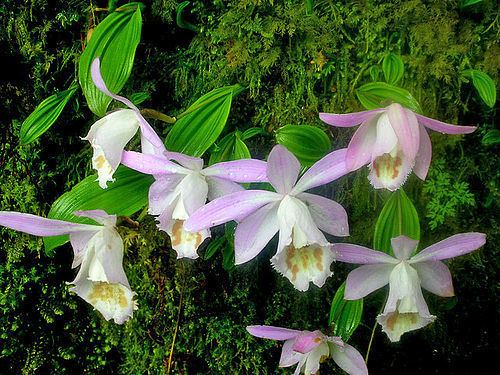
Distribution and habitat
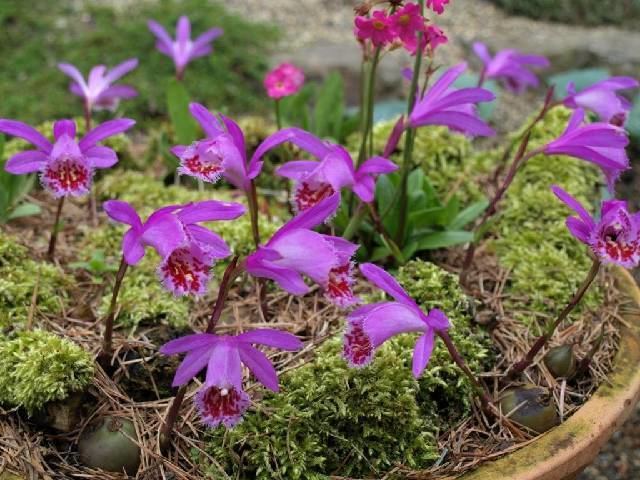
Pleione is distributed in the mountains and foothills of the Himalayas, India, Tibet, Nepal, Bhutan, Bangladesh, Burma, Thailand, Laos, Vietnam, Taiwan, and China. The species are well adapted to cold temperatures and even frost. A few, however, prefer warmer temperatures. They grow in well-drained habitats and on rocks covered with moss at altitudes of 600–4,200 m (1,969–13,780 ft).
Growth
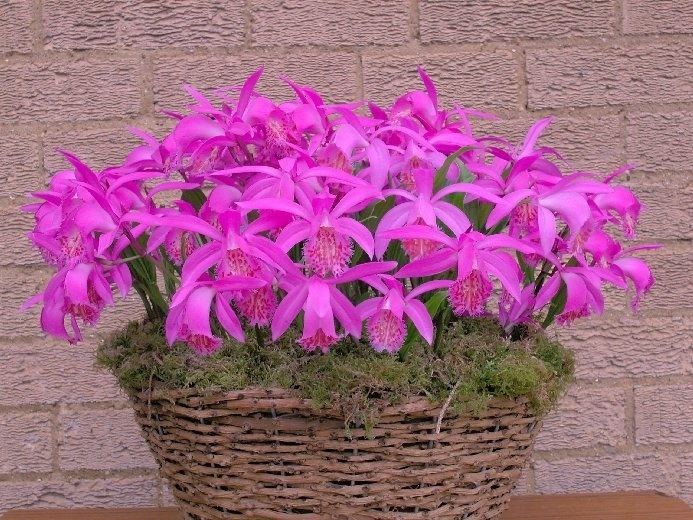
The sympodial growth habit of terrestrial Pleione orchids is unusual. They have relatively large, spongy, almost globular or ampulliform pseudobulbs, narrowed at the apex. Every pseudobulb is only active for one year and carries one or two pleated parallel-veined leaves, with a length of 15–30 cm (6–12 in). These drop off before winter. The pseudobulb stays dormant, till a new one starts to develop. This one produces new roots and a short pedicel. This pseudobulb remains active till the end of the bloom. Then the whole cycle starts all over again.
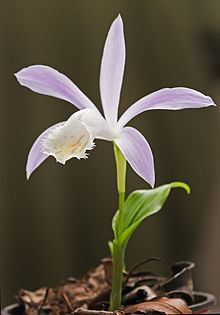
The big, showy flowers originate from new shoots formed at the base of the pseudobulb. They are pink to purplish, white or yellow, while the fringed, tubular lip is often paler or white, with yellow, red or purple dots and stripes. The flowers of the mountain species start blooming in spring, while the new shoots develop. The flowers of the orchids, growing in warmer climates, bloom in autumn, when the leaves have dropped.
They are very closely related to the genus Coelogyne and were once considered part of it.
Cultivation
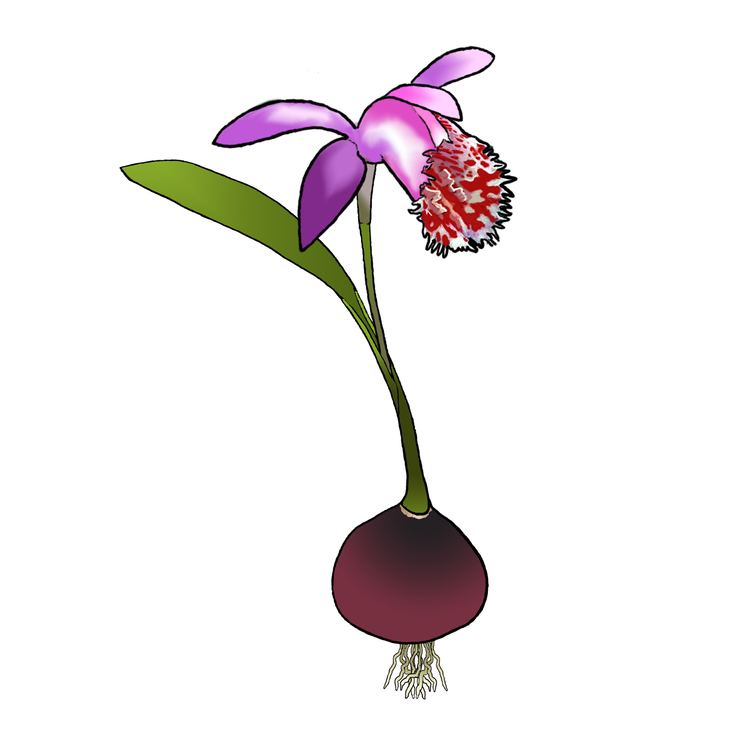
They are easily grown by the layman, easy to propagate and are among the most popular orchids. They are much in demand for hybridization. Numerous garden hybrids have been produced, of which the following have gained the Royal Horticultural Society's Award of Garden Merit:-
Species
It has been suggested that P. bulbocodioides, P. limprichtii and P. pleionoides could all be the same species.
Currently, there are two sections in the genus Pleione
